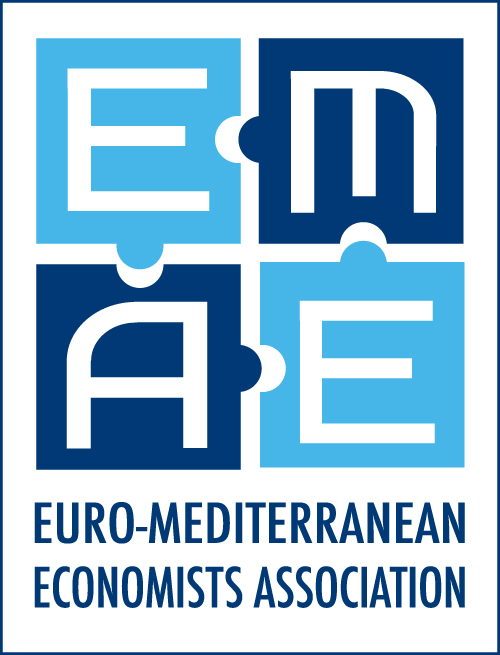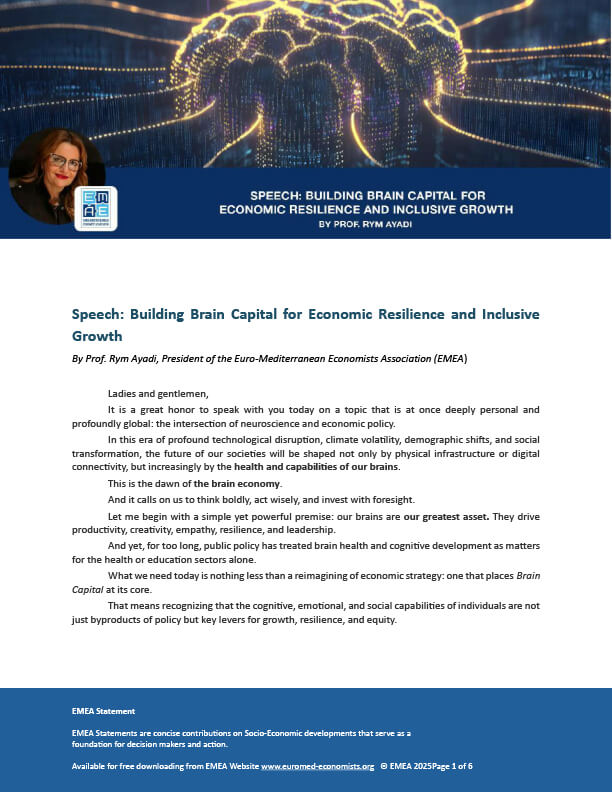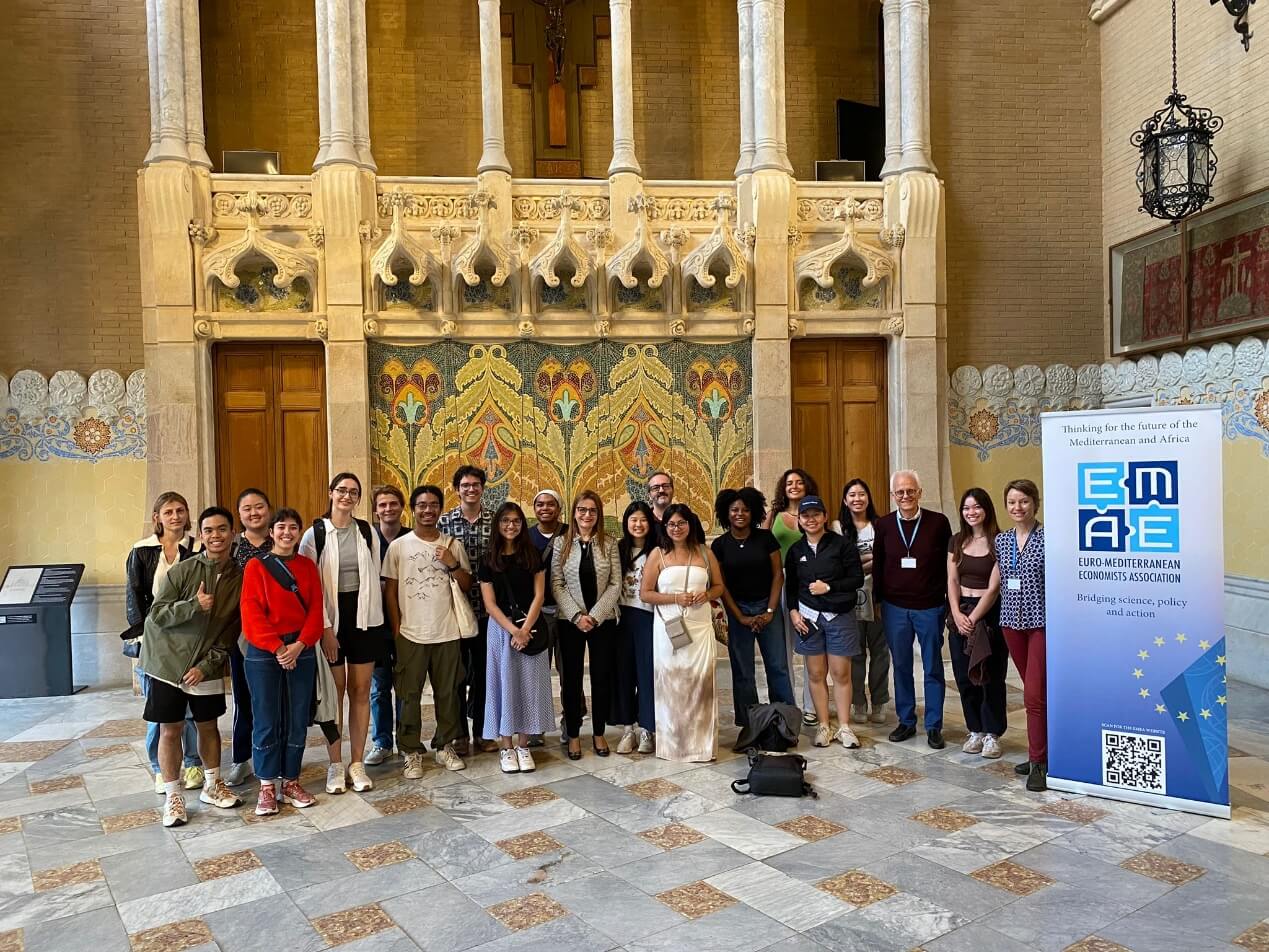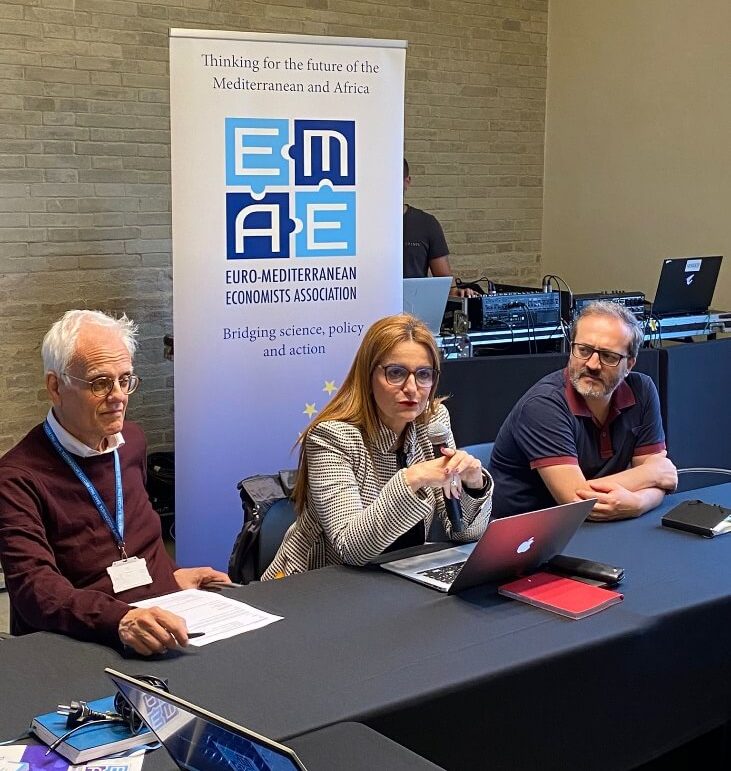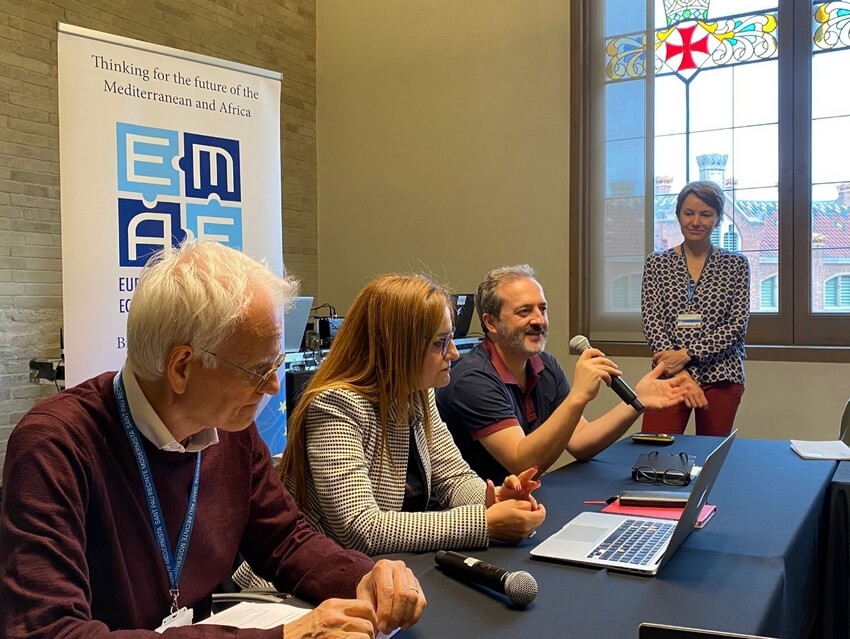Barcelona, 11 June 2024: The Euro-Mediterranean Economists Association – EMEA organised the session “Enabling the green transition in local communities” as part of the visit of students from Rice University School of Architecture in Houston, including 13 architecture students and 6 engineering students. The students were accompanied by Juan José Castellón, Assistant Professor of Architecture at Rice University.
Opening the event, EMEA President Prof. Rym Ayadi highlighted that “Cities are not just the places where we live; they are the spaces where we can innovate, adapt, and thrive. By designing urban and rural environments that prioritize sustainability, mental health, longevity and lifelong learning, we can create communities that are resilient in the face of climate change and rich in opportunities for growth and well-being”.
During the session Marc Montlleó, Barcelona’s Regional Agency Director of Environment, Energy, and Data, explained the actions and changes implemented by the City of Barcelona to accelerate the green transition and improve the city’s livability. In his presentation of the current and planned initiatives at the Barcelona city level, Marc explained the measures taken to ensure water efficiency in the city against the background of the prolonged drought, to promote renewable energies, and to ensure Barcelona has effective mitigation and adaptation measures as regards to extreme weather such as storms. He highlighted initiatives such as Hands on Green to promote community engagement and green initiatives and transformations in the cities parks to increase accessibility to green spaces.
Following this, Prof. Juan José Castellón, posed the question how Barcelona’s model and actions could be transposed to other cities and territories. Marc highlighted that many of the solutions are already borrowed from other city plans and actions meaning implementing solutions is a collaborative effort where one city can learn from another. For example, in the US, there are many great examples of projects building climate shelters in places such as San Francisco.
Drawing on the idea that Barcelona has implemented many successful models as a densely populated city, EMEA Executive Board Member Prof. Carlo Sessa gave his thoughts on the concept of 15-minute cities and citizen behaviour, to encourage a more holistic view of city planning. Finally, EMEA Senior Project Officer Joanna Grodzka presented the Interreg Euro-MED Green Living Areas Mission, funded by the European Union, in which EMEA is a project partner. This initiative supports 19 thematic projects addressing challenges related to green transition in mobility, energy, spatial planning, citizen engagement, and green finance and brings a systemic thinking approach to reshaping the built environment.
The session ended with a cultural visit to the Sant Pau Recinte Modernista an UNESCO World Heritage Site, where EMEA is located.
